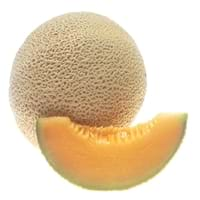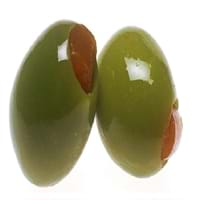Health Benefits
Cancer prevention, Heart care, Improves eye vision, Prevents diabetes, Reduces stress
Cancer prevention, Helps in cartilage regeneration, Prevents macular degeneration, Treatment of alzheimer's disease
General Benefits
Boosts immune system, Cures cough, Cures fever, Digestive aid, Eye care, Helps in weight loss
Anti oxidant properties, Anti-inflammatory properties, Boosts immune system, Controls blood pressure, Digestive aid, Maintains healthy cholesterol level
Skin Benefits
Anti-aging benefits, Hydrates skin, Skin rejuvenation, Treatment of skin diseases
Hydrates skin, Skin rejuvenation, Treatment of skin diseases
Hair Benefits
Good conditioner, Prevents hair loss, Protects hair
Acts as moisturizer, Good conditioner, Regulates hair growth
Allergy Symptoms
Abdominal pains, Anaphylaxis, Breathing difficulty, Diarrhea, Dizziness, Hives, Itching of mouth, Nasal congestion, Nausea, Vomiting
NA
Side Effects
Allergic reaction, Bloating, Indigestion
Affects blood glucose levels, Dizziness, Stomach pain
Best Time to Eat
As a snack in the late afternoon, Don't consume at night and before bed, Eat the fresh ones, avoid mixing with any other foods, don't eat after meal., Morning time (before lunch)
Hardly eaten raw, Olive oil is consumed for many purposes.
Vitamin B5 (Pantothenic Acid)
Vitamin C (Ascorbic Acid)
Vitamin K (Phyllochinone)
Phytosterol
Not Available
Calories in Fresh Fruit with Peel
Not Available
Calories in Fresh Fruit without Peel
Not Available
Calories in Frozen Form
Not Available
Calories in Canned Form
Not Available
Season
Summer
Spring, Summer
Varieties
Hales Best Jumbo, Sweet 'N Early Hybrid, Hearts of Gold, Ambrosia, Athena, Honey Bun Hybrid, Fastbreak and Superstar
Manzanillo, Sevillano, Mission, Ascolano, Barouni, Gordal, Rubra and Picholine
Color
Orange
Black, Green, Purple, Yellow
Inside Color
Creamy Orange
Brown
Taste
Juicy, Musky, Sweet
Bitter
Origin
Africa, India
Eastern Mediterranean Region
Soil Type
Sandy
Well-drained
Climatic Conditions
Dry, Hot
Warm to hot climate
Facts about
- Cantaloupe is known as rock-melon in some parts of the world.
- Christopher columbus first introduced cantaloupes to north america in 1494.
- The name 'Cantaloupe' as it is cultivated in papal gardens of cantaloupes, Italy.
- In ancient Greece, 1st eye shadow was made by adding olive oil in ground charcoal.
- The most expensive form of olive oil is Extra Virgin.
- Largest type of olive tree is known as donkey tree & smallest one is called bullet.
Other Countries
Iran, Romania, Turkey, United States of America
Algeria, Egypt, Greece, Italy, Morocco, Portugal, Syria, Tunisia, Turkey
Top Importer
United States of America
United States of America
Botanical Name
Cucumis melo var. cantalupensis
Olea europaea
Synonym
Cucumis melo var. reticulatus
Not Available
Subkingdom
Tracheobionta
Tracheobionta
Division
Magnoliophyta
Magnoliophyta
Class
Magnoliopsida
Magnoliopsida
Subclass
Dillenhidae
Rosidae
Order
Cucurbitales
Lamiales
Family
Cucurbitaceae
Oleaceae
Species
C. melo
O. europaea
Generic Group
Gourd
Olive
Compare Cantaloupe and Olive
It is important compare Cantaloupe and Olive as both the fruits have a different nutritional value. Their comparison can be done on the basis of their vitamin and mineral content, calories, benefits as well as characteristics, making it easier for us to choose the best fruit for our diet. Their general health benefits are as follows:
Cantaloupe Benefits: boosts immune system, cures cough, cures fever, digestive aid, eye care and helps in weight loss.
Olive Benefits: anti oxidant properties, anti-inflammatory properties, boosts immune system, controls blood pressure, digestive aid and maintains healthy cholesterol level.
Fruits are also used as a remedy for various hair problems. The hair benefits of Cantaloupe are: good conditioner, prevents hair loss and protects hair and hair benefits of Olive are: acts as moisturizer, good conditioner and regulates hair growth. Some fruits are known to cause allergic reactions. The allergy symptoms of first fruit are: abdominal pains, anaphylaxis, breathing difficulty, diarrhea, dizziness, hives, itching of mouth, nasal congestion, nausea and vomiting and the symptoms of second fruit are: na. Get sorted Cantaloupe vs Olive comparison with the help of fruit comparison tool by fruitvs.com.









